
e are often told: Write what you know.
Those are valuable words of wisdom that have brought many authors great success. But what if you want to write about what you don’t know? What’s a writer to do when she’s bursting with inspiration for characters whose lives are very different from her own?
Other writers have done it—to great acclaim as well as to hefty criticism.
Is it possible to create engaging multicultural characters who are believable and true when we haven’t walked in their shoes? What does it take to bring to life a Korean heroine from another era or a young Afghan protagonist in the throes of war?
When the very culture and family life that shapes your characters and stories are foreign to you, it’s easy to fall into clichés or keep your distance. But with a healthy dose of respect and solid research, you CAN create multicultural characters that will capture the hearts of your readers. Authors from many genres have done so with resounding success, and they’ve shared their best tips with WOW! Five incredible authors, editors, and agents share their successes and struggles on the road to publishing memorable multicultural books based on characters that refused to step aside.

“There’s a certain amount of escapism that’s nice when we imagine ourselves in exotic places.”
(Photo: Elise Capron)
Readers Love Being Swept Away
Multi-culti books are doing brisk business these days. Whether it’s traveling overseas through the experience of a dynamic character or traveling back in time to an enclave of America that has been long forgotten, readers love to learn about other ways of life.
“A big part of reading, especially these days, is that we want to learn while we read,” says Elise Capron, literary agent and office manager of the Sandra Dijkstra Agency.
Multicultural novels give us a way of seeing the world and learning about it from a different lens, if only for a while.
“It’s an important part of understanding the world and what it means to be human,” Capron says. “There’s a certain amount of escapism that’s nice when we imagine ourselves in exotic places. It’s also a great way to learn about history around the world through fiction that is still entertaining.”
Perhaps you have been inspired by your own travels, a family history, or simply a special connection you feel with another culture. Whatever the reason, more writers than ever are tackling the challenge of telling a story based on a culture that’s not their own. Here’s how to take readers on that enlightening journey—and perhaps become enlightened yourself along the way.
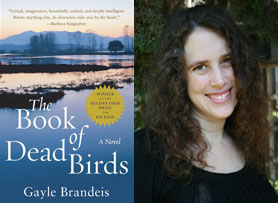
“It’s about being fully present inside the skin of our character.”
(Photo: Gayle Brandeis)
Through the Eyes of a Beloved Character
From children to adults, readers love to hear tales of exotic or quirky locales. It’s through the pages of a book that we can experience the sights and sounds of a foreign land or a different way of life through the eyes of a beloved character. These characters often teach us that people all over the world are more alike than they are different, despite outward appearances and daily customs.
Creating those beloved characters that take us on the journey takes profound respect, says Gayle Brandeis, author of The Book of Dead Birds, which won Barbara Kingsolver’s Bellwether Prize in 2002. “Coming from a humble and respectful place is crucial,” she said.
The protagonist in Brandeis’s novel is a Korean woman, and Brandeis says it took a lot of research for her to feel comfortable telling the story.
“This character felt so real,” she said. “But I was completely terrified because I knew very little about Korean culture at the time; and as a white woman, I just didn’t feel like that was my story to tell.”
When she couldn’t get the character out of her mind, Brandeis turned to research to make sure that her character’s thoughts, actions, and dialogue were authentic. “I decided that I needed to write this character with as much research as possible, so that I could write with knowledge and respect and authenticity,” she said.
Though book research was an important part of her process, Brandeis felt it was critical to have a complete sensory profile of Korean life. She spent a great deal of time in Korean-heavy neighborhoods near her California home, eating Korean food, listening to Korean music, and absorbing the sights and sounds around her.
“When we experience it with our bodies, we can write about it in a more three-dimensional way,” she explained. “Then it’s not just a mental exercise—it’s about being fully present inside the skin of our character.”
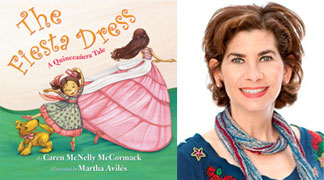
“I think the job of any good writer is to get into the head of your character or your situation.”
(Photo: Caren McNelly McCormack)
For Caren McNelly McCormack, getting an in-depth look at her characters’ ethnic customers simply meant being observant throughout her childhood. McCormack wrote her picture book, The Fiesta Dress, based on her experiences growing up in Texas and attending the traditional quinceañera celebrations of her Latina friends.
“I don’t think you have to be a member of a certain ethnicity to write authentically about that topic or that group,” McCormack says. “I think the job of any good writer is to get into the head of your character or your situation.”
McCormack believes that the research and professionalism required for multicultural fiction hold true for all types of writing. “If you look at historical fiction, none of the authors lived in the time period they’re writing about,” she said. “I don’t see multicultural writing as that different.”
If you’re anything less than intimately familiar with the culture that has inspired you, in-depth research is critical. Immerse yourself in books, photographs, films, and documentaries about it.
Author Lisa See, who is part-Chinese and has written a number of best-selling books based on her family history and cultural heritage, agrees that hefty research is a must. “Do all the research you can—go to your local library and read everything you can find; go to a university library and read published and unpublished dissertations on your subject; and poke around on the Internet to see what you can see,” she advises.
See also recommends visiting every place that you write about if possible, putting yourself in your character’s shoes at every step along the way. “The biggest pitfall I see is not doing the work,” she said. “Readers will spot that a mile away.”
If you can’t get to the setting in person, savor the sensorial details that will give you a true picture of day-to-day life by spending time with people from that culture. “Having a connection with people is really a way to make sure you are making the character ring true,” Brandeis advises.
Agents and editors have seen countless manuscripts in which writers haven’t done their research and can spot them right away. “With fiction, you can really tell that the author has done a lot of research. It doesn’t feel fake, and it doesn’t feel forced,” said Capron.
To get to the place where research brings your story to life, keep in mind the passion for the characters and culture that sparked your journey. It’s that combination of research and passion that will make your story sing. “You can do enough research until you get to a place where you can write what you know; but I still believe you should have a deep-heart, blood affinity for your story,” said See.
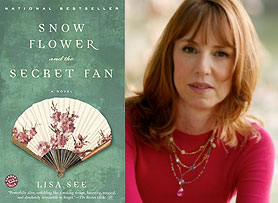
“I still believe you should have a deep-heart, blood affinity for your story.”
(Photo: Lisa See)
The Devil in the Details
Even if you have a gripping tale and beloved characters, a publisher may not be willing to take a chance on your work if you haven’t perfected the details. That’s your chance to show that you’ve mastered the intricacies and know the culture inside and out.
For McCormack, that’s what sold her editor on the manuscript. “The way she used Spanish throughout the story, it felt like it was flowing; and you weren’t thinking about it being a Latino story. You were just getting pulled into the story,” said Marilyn Brigham, McCormack’s editor at Marshall Cavendish. “I think that showed that it was coming from a more authentic point of view.”
In many cases, that means going beyond the surface to understand some of the lesser-known traditions and meanings in a given culture. For example, Brandeis learned through her research into Korean culture that using a red pen symbolizes death, and that writing someone’s name in red had great symbolic meaning. Whether it’s something that dramatic or knowing precisely what type of shoes your character would wear, specific cultural details can bring your story to life. “If you get the details right, that will bring a level of authenticity to the story that will be hard to dispute,” Brandeis says.
In addition to adding authenticity, the details can teach us about another culture and add depth to the story. “Writers should keep in mind all the little things about a culture that readers may not know and really want to learn about,” encourages Capron. “Everyday details of life are where some of the most exciting stuff can happen.”
Just as important as the details you put in the story are those you leave out. If there’s a critical component to life in your character’s culture, be sure you’ve worked it into your manuscript. Glaring omissions can be just as off-putting.
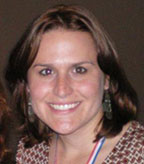
“The way she used Spanish throughout the story, it felt like it was flowing.”
(Photo: Marilyn Brigham)
Talk It Up
Through dialogue, you have the opportunity to let your character’s personality shine through. It’s especially important to get the dialogue, word choice, and speaking patterns right in a multicultural work. When writing the dialogue for her Korean character, Brandeis had reservations about using broken English, but felt it was critical to the authenticity of the story.
“I was a little concerned that the mother’s broken English would come across as stereotypical sounding, and I really didn’t want that to be the case,” she said.
By spending time in Korean neighborhoods talking with those around her, Brandeis was able to get the dialogue just right. “It’s about just listening to people speak around me and trying to get those rhythms right,” she said. “But it did feel like a tightrope.”
When you’ve done all your homework and polished your manuscript, be sure that one or more trusted members of that ethnic group reads your work before you begin the submission process. If there are inaccuracies, omissions, or awkward dialogue, a solid review by an honest reader can help catch any issues.
“Fully committing to the character and leaving your insecurities behind is the key to writing a passion-filled story.”
Don’t Hold Back
If you’ve got an ethnic character that captures your imagination or a multi-culti plot line that won’t leave you alone, don’t be afraid to embrace it. Fully committing to the character and leaving your insecurities behind is the key to writing a passion-filled story.
“Don’t let the fact that you aren’t a member of a particular group stop you from writing those stories,” McCormack encourages. “If that is where you have inspiration or where you’re drawn to, don’t be afraid. If you do your homework and you come to it with the preparation that you hopefully come to any story with, you can come out with an authentic and successful piece.”
Brandeis confesses that her initial concerns held her story back until she finally decided to write it in the first person.
“I had been writing in the third person because it seemed safer—I was observing my character and not pretending to be her, which seemed like less of a creative risk,” she said. “I think my work suffered because I was keeping my distance.”
Once she began writing in the first person, it all came together.
“I realized when I was done writing it how much I had in common with the main character, even though she is so different from myself,” Brandeis explained. “It was a great reminder for me of how fiction can help us connect with people who are other than us. We end up realizing that we’re all humans, and we all share human stories.”
Keep Your Story Strong
No matter in what context or culture your story takes place, the key elements of good writing still apply. “All of this still comes down to good storytelling, and good storytelling can occur in any environment or context,” said Capron.
She encourages writers to focus on creating a solid opening to hook readers. “Everything you have, and every decision that an agent, editor, and reader make are going to be based on that opening,” Capron encourages.
She says it’s also vital to read heavily in your genre. “A writer has got to understand what is already out there to understand if his or her character is fresh enough,” said Capron. “And be able to come to the work with a really critical eye to see if it is unique enough.”
The Power of Fiction
Though the settings, customs, and daily lives of the characters in multicultural fiction are unique to each culture, many of the emotions and needs the characters express are universal.
Though a good portion of McCormack’s readers are Latino, she believes that many simply enjoy and relate to the story, which deals with a little girl’s feelings of being left out during an important family event. “To some degree, that happens to everybody, whether it’s a quinceañera or a bat mitzvah or something else,” she said. “The universal connection is a child feeling left out in the middle of the action.”
Although McCormack successfully created an authentic Latina character and story, Brigham admits that many authors fall short when writing outside of their own ethnicity. “In Caren’s case, she had been immersed in that culture growing up, and her work was flowing with authenticity,” she noted.
Take a page from McCormack’s book—figuratively speaking—and see if multicultural work inspires you. Maybe seeing the world from another point of view will expand your horizons, and give you a window into yourself.
“This process really reinforced for me that fiction is all about connecting,” says Brandeis. “It’s dangerous if we tell ourselves we can only write about our own experience because then fiction isn’t doing its full job of stretching us wide open.”
***
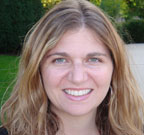
BJ Marshall is a freelance writer living in the Chicago suburbs. Though she doesn’t write multicultural fiction, she does know how to tell a good story. Read about her adventures trying to take her family in a greener direction at www.confessionsofagreenmom.com or check out her website at www.bjmarshall.net.
---------------------------------------------------------------
Interviews with Author Trent Reedy and Editor Cheryl Klein
By BJ Marshall

efore Trent Reedy finished his tour of duty in Afghanistan as a member of the U.S. Army, he made a promise to a young Afghan girl: He would tell her story. He kept his promise, with resounding success. In 2011, Scholastic published his children’s novel, Words in the Dust. In it, Trent tells the fictional story of Zulaikha, a thirteen-year-old girl with a cleft lip, who hopes for a better future. Born and raised in Iowa, he overcame a number of challenges in writing an authentic first-person story about an Afghan girl. Together with his editor on the project, Cheryl Klein, Trent shares with WOW! what it took to create this inspiring tale.

“I worried that no agents, publishers, or readers would seriously consider a story from the perspective of an Afghan girl that was written by a white man from Iowa.”
(Photo: Trent Reedy)
WOW: Did you have any reservations about writing a story from Zulaikha’s point of view?
Trent: I had many doubts about writing a novel like Words in the Dust from Zulaikha’s point of view. Beyond my concerns over my own ability to write Zulaikha convincingly, I worried that no agents, publishers, or readers would seriously consider a story from the perspective of an Afghan girl that was written by a white man from Iowa. The idea seemed crazy even to me.
In the course of my studies toward my MFA in writing for young people from the Vermont College of Fine Arts, I learned of a more significant controversy surrounding people writing outside their cultures, especially if these writers are part of the “majority” or “privileged” culture. People objecting to majority culture writers appropriating the stories of minorities have a valid point. Outsiders run a greater risk of misrepresenting the group they’re writing about. At best, such misrepresentations result in casual misunderstanding. At worst, they can suggest or perpetuate harmful negative stereotypes. I had been a part of an occupying army in Afghanistan. Therefore, to write a novel that unfairly depicted Afghans and Afghan culture in a negative way seemed to me like the worst form of cultural imperialism.
I worked very hard with Words in the Dust to offer what research and personal experience told me was one possible, realistic Afghan story.
I suppose I was able to overcome these reservations because Words in the Dust is a story that means a lot to me on a deeply personal level. During my time serving with the Iowa Army National Guard helping to provide security for the reconstruction effort in support of Operation Enduring Freedom in Afghanistan, my fellow soldiers and I encountered a young girl named Zulaikha who suffered from birth from cleft lip. We were able to help this girl get the corrective surgery she needed; and after I saw her truly smile, I felt inspired, and I promised to let people know about her. I would have liked nothing more than for Zulaikha to tell her own story, but the unfortunate reality is that the overwhelming majority of Afghan women and girls are illiterate. Thus, to keep my promise to Zulaikha, I knew I would have to write a novel inspired by her example.
WOW: What was the most challenging part of writing a novel set in another culture?
Trent: For the purposes of writing Words in the Dust, I was fortunate enough to spend an entire year living and working in Afghanistan. My unit’s mission, to provide security for the reconstruction effort, required that my fellow soldiers and I interact closely with Afghans on an almost daily basis. We visited many Afghan villages in Farah, Herat, and Nimruz Provinces. My fellow soldiers and I also rented and lived in an average Afghan house, while our base was under construction outside of the city of Farah. We were frequently invited to dine with Afghans in their homes, especially during the time of Ramadan. All of this personal experience with Afghan culture helped me with a number of parts of the novel.
However, the engagement and wedding scenes in Words in the Dust presented a significant problem because I had no firsthand experience with these Afghan customs. I wrote the first version of the wedding scenes based on an account I read in one nonfiction book. My friend from Farah Province in Afghanistan said that no wedding would ever happen this way. He attempted to explain how a real wedding in his community would transpire, but our understanding was limited by the vast differences in our experiences.
What followed was an epic struggle as my editor, Cheryl Klein, and I searched for every source we could find on Afghan weddings. We read books and articles, and we interviewed Afghans and Afghan Americans. We eventually discovered that no two sources we’d found precisely agreed on how a wedding in Farah Province would happen. We then worked for what we believe to be a possible and likely wedding given the characters and situations in Words in the Dust. Writing the wonderfully complex wedding scenes was a significant challenge; but it was great because it allows Cheryl and me to joke that no matter what difficulties come up in our work together, they cannot be more of a challenge than writing the Afghan wedding scenes.
WOW: In addition to your own personal experiences in Afghanistan, what did you do to prepare yourself for writing this novel, which was rooted so deeply in Afghan culture? How did you ensure that the setting, the voice, and the characters were authentic?
Trent: I was very blessed in that my personal experiences helped form the basis for most of Words in the Dust. The house that Zulaikha’s family lives in is based on an Afghan house my fellow soldiers and I lived in. The scenes outside of Farah base, at Kandahar, on the walls of the Citadel, and at the Farah hospital are all based on my own experiences. Thus, writing an authentic setting wasn’t a significant challenge. Besides my experiences, I read many books, studying all Afghanistan-based novels for young people as well as a lot of nonfiction. I was very pleased to discover Afghanistan’s rich tradition in poetry. When I discovered the classic poems, some of which are featured in a brand-new, original translation in the novel, I knew I had to find a way to incorporate them into the novel. I wanted Words in the Dust to show off as much of Afghanistan that wasn’t related to war as I could.
I am often asked about how I approached the voices of the characters in the novel. In particular, people often wonder how I wrote from Zulaikha’s perspective. With all the characters in the book, I did the best I could to understand who they were and why they did and said the things they did. I do not remember a time when I consciously made a decision to alter a line of internal or external dialogue out of concern that the voice was inauthentic. I believe this only serves to reinforce my belief that Afghans and Americans are more alike in our hopes, desires, and fears than we generally recognize or admit.
“Writing a story about a culture other than one’s own requires great care, significant research, and most importantly—a profound respect and admiration for the people being written about.”
WOW: What advice do you have for writers who are inspired to write about a culture that is different from their own?
Trent: Writers should write whatever stories are close to their hearts. If that story is from the perspective of someone from outside the writer’s culture or experience, that doesn’t mean the writer should give up the story. However, those writing about a culture other than their own, especially members of the American majority writing about minority cultures, should be aware of the large controversy and significant discussion surrounding these issues. While all writers face the burdens of writing a compelling story with tension and complex characters, those writing outside their culture face many other challenges at all phases of the writing process. Writing a story about a culture other than one’s own requires great care, significant research, and most importantly—a profound respect and admiration for the people being written about.
It can be a wonderful experience, but it is not a decision that should be taken lightly.
WOW: What do you hope young readers will gain from reading the book?
Trent: I hope readers of Words in the Dust will learn what I learned from my experiences in Afghanistan, that the Afghan people, like people everywhere, want peace and the chance to make better lives for themselves. I hope readers will have a friend in Zulaikha that will help them see the beauty and wonder in Afghanistan and in the Afghan people and culture.
Most of all, I hope readers can look forward to the day when young Afghan children, particularly Afghan girls, can share their own stories, reaching out with their own voices and their own art, guiding a new Afghanistan to a more peaceful and prosperous future.
WOW: Thanks, Trent, for inspiring us with your incredible story and your compassion and respect for Afghan culture!
Readers, find out more about Trent by visiting his website, www.trentreedy.com.
WOW! is fortunate to have Trent’s editor with us as well to share her thoughts on the road to publication for Words in the Dust. Scholastic’s Cheryl Klein has edited a broad range of multicultural children’s novels, many of which were translated from other languages. She shares with us what made Trent’s manuscript stand out and what other writers can do to bring authentic multicultural characters to life.

“There were so, so many ways it could go very wrong; and I was pleasantly surprised—amazed even—when I read the book and found it went right.”
(Photo: Cheryl Klein)
WOW: You’ve edited many books that have been rooted in another culture. Why do you think readers are drawn to strong books with foreign settings or multicultural elements?
Cheryl: I think it’s for the chance to “think different,” as the Mac slogan went—to experience life from not just a completely different point of view (which you should get from any well-written character), but a completely different mindset. In my experience, that often opens up new ways of thinking about the mindset and resultant practices of my own world, which is sometimes painful but always fascinating.
WOW: What first attracted you to Trent’s manuscript?
Cheryl: I’ve always been interested in stories set in other cultures, and a story set in Afghanistan was particularly compelling to me because of the United States’ ongoing presence there—it’s a country that we’re now intimately involved in; but we don’t have a lot of understanding of its culture here on the home front, I don’t think. And Afghan women especially face such a difficult and powerful fight to gain what we in the West think of as basic human rights like education or the freedom to determine your own destiny. It was exciting to read a manuscript that dramatized those battles and made them real for American readers.
With that said, I have to admit that before I read the manuscript, I had major doubts about it—basically because I found it hard to believe that a white guy from Iowa who had served in the American Army could successfully write in the voice of a 13-year-old Muslim girl in Afghanistan. There were so, so many ways it could go very wrong; and I was pleasantly surprised—amazed even—when I read the book and found it went right.
WOW: What are some of the traits of his writing that you believe made the story and characters authentic?
Cheryl: Trent had been to Afghanistan, so he knew what the light was like, how the houses were laid out, what local brand of soda the characters would drink, how the day would begin—all those little details that fill out a setting and make it real for the reader.
And then he was unflinchingly honest about the positive and negative aspects of both the cultures involved in the book. The Americans are not white-hatted heroes who never make mistakes; they’re portrayed as well-intentioned people who sometimes do good things, like provide Zulaikha’s surgery, and sometimes act in a terribly ignorant, wasteful, or offensive manner from the Afghans’ point of view. The Afghans are not shown to be nobly misunderstood freedom fighters oppressed by the U.S. involvement in their country, or worse, backward heathens who need the Americans to save them; rather, they’re just people trying to figure out how best to survive in a rapidly changing culture, just like people here in America.
Certain Afghans act in the book in ways that might offend American sensibilities, and Trent didn’t pull any punches in showing this behavior and its consequences. That means he didn’t cater to how I, as an American woman, would like the world to be, but rather told me the truth about how it is; and that makes me, as a reader, respect him and the book all the more.
Finally, his characters are completely real human beings with many desires, fears, joys, and behaviors that American readers would recognize. Zulaikha’s teenage sister Zeynab daydreams about finding a wonderful husband in just the way American girls might swoon for the perfect boyfriend. Her father loves his daughters dearly and wants to do what he sees as best for them—which might sometimes include a beating, as per his worldview, if they dare to contradict him. Amir behaves just like bullies the world over in teasing Zulaikha for her cleft lip. The way he [Trent] showed his characters to be not just Afghan and not just Muslim, but human in all these entirely ordinary ways, is, for me, the most significant factor in making his characters authentic.
WOW: What are your thoughts on the balance he struck between being true to Afghan culture and remaining engaging and accessible to young readers?
Cheryl: American readers expect their protagonists to take action and help drive the story along. Unfortunately, many Afghan girls aren’t given the chance to be the drivers in their own stories. So Trent found the small, often domestic ways in which Zulaikha could take action; and because he also shows us how circumscribed her life is, he made those small actions feel as big to readers as they do to her: daring to climb a castle while searching for her brother, sneaking away to take reading lessons, getting the chance to drive to another town and fly in a plane.
WOW: Have you worked with any other authors who write well across cultural lines? What do they do that makes their work resonate with readers?
Cheryl: I’m working right now on a historical novel to be published in 2013, set in China and San Francisco in the 1920s with a Chinese protagonist/narrator named Jade Moon. It’s written by a white author; and in order to get Jade Moon’s voice right, the author studied the work of many Chinese writers in translation, especially poets. While it’s always dangerous to generalize (and I absolutely don’t claim to be an expert here), it’s my understanding that Chinese writers often place strong emphasis on the interplay between spareness and feeling—using fewer words than Western prose, perhaps, but with each one made to carry more weight—sometimes expressing emotion directly and sometimes creating it through some exquisitely chosen images.
Thanks to her immersion in Chinese literature, the author was able to employ that same style in Jade Moon’s voice, so it’s really powerful and fascinating to read. And like Trent, this author goes beyond whatever stereotype we might carry in our minds about how Chinese women of the 1920s would behave to create Jade Moon as a spirited, good-hearted, stubborn, flawed, perfectly real young woman all the way around.
My author Lisa Yee does a great job with writing characters outside her race, like the protagonists of So Totally Emily Ebers, Absolutely Maybe, and Warp Speed. As far as I can tell, she created those characters the same way she created her terrific Chinese-American protagonists like Millicent Min and Stanford Wong: with a focus on who they are as people first and how they developed that way based upon their families and interests—which in turn can be strongly influenced by their culture and ethnicity, but are not wholly determined by them.
“You have to be willing to let go of your own biases and beliefs, even those you hold most deeply in your soul, to truly hear where someone else is coming from and why.”
WOW: What are some mistakes that writers often make when trying to create characters and stories set in another culture?
Cheryl: Here are a few things writers should do or need to do to create these characters and stories successfully. First, you should go to the setting if you can, as landscape, weather, the rhythms of daily life, etc., all make a huge difference in a place and its people that you can really only understand through being there. Which is not to say that you can’t write well about a place without having been there; but I think there is a qualitative difference to the writing once the writer has actually walked the character’s roads and seen the angle of the character’s sun—all of that.
Second, you absolutely have to try to understand the culture as deeply as you can. I think that from a moral standpoint, we Americans are right to be horrified by the treatment of women in Afghanistan. But the moment we make a judgment, that’s where our understanding ends because we’re more interested in what we’re saying than in where that behavior comes from, or what it means to the person who lives there and experiences it. So you have to listen a lot, as much as you can, to as many different voices in that culture as you can. You should do research into the place’s history to know, for example, why Afghans might be hostile to a long-term American presence there (Hint: it’s not because they hate our freedoms) and read as many primary sources from that culture as possible.
A lot of the work writers have to do can be internal. You have to be willing to let go of your own biases and beliefs, even those you hold most deeply in your soul, to truly hear where someone else is coming from and why. That doesn’t mean you’ll ultimately agree, of course; but you have to be able to see their point of view and recreate it to show the truth about that character within that culture. Depending upon the place, group, and time you’re writing about, you may have to accept that your own culture, including perhaps your ancestors, did some terrible, terrible things. Indeed, you may find out that you may be horribly wrong about something or complicit in committing some wrong or benefiting from massive amounts of privilege you haven’t earned, and you have to be willing to face that and accept the consequences. And ideally you should have a person from that culture read and comment on your work, and you have to be open to the feedback. All of this requires letting go of the idea of your own virtue or rightness, which can be a really hard thing to do; and it requires massive amounts of humility to again listen and learn and try to understand first of all, and write later and revise as necessary. This was another impressive thing Trent did: portraying the army he was a part of on a mission he participated in, as people who could be incompetent or foolish. In other words, he let go of his own ego in service of his character’s story, which is the mark of a good writer no matter what culture s/he’s writing about.
Finally, you should remember that while your characters will grow out of their culture, they will also be individuals acting within that culture, who might occasionally act outside its understood boundaries. But they should act in that way because that’s who they are driven to be as people and who you’ve shown them to be as people—not because you’re inserting your twenty-first century Western point of view or your own narrative needs into the character.
WOW: Cheryl, thanks for the great advice and for sharing your insights and perspectives from the editor’s point of view!
Readers, keep up with Cheryl at www.cherylklein.com.
***

BJ Marshall is a freelance writer living in the Chicago suburbs. Though she doesn’t write multicultural fiction, she does know how to tell a good story. Read about her adventures trying to take her family in a greener direction at www.confessionsofagreenmom.com or check out her website at www.bjmarshall.net.